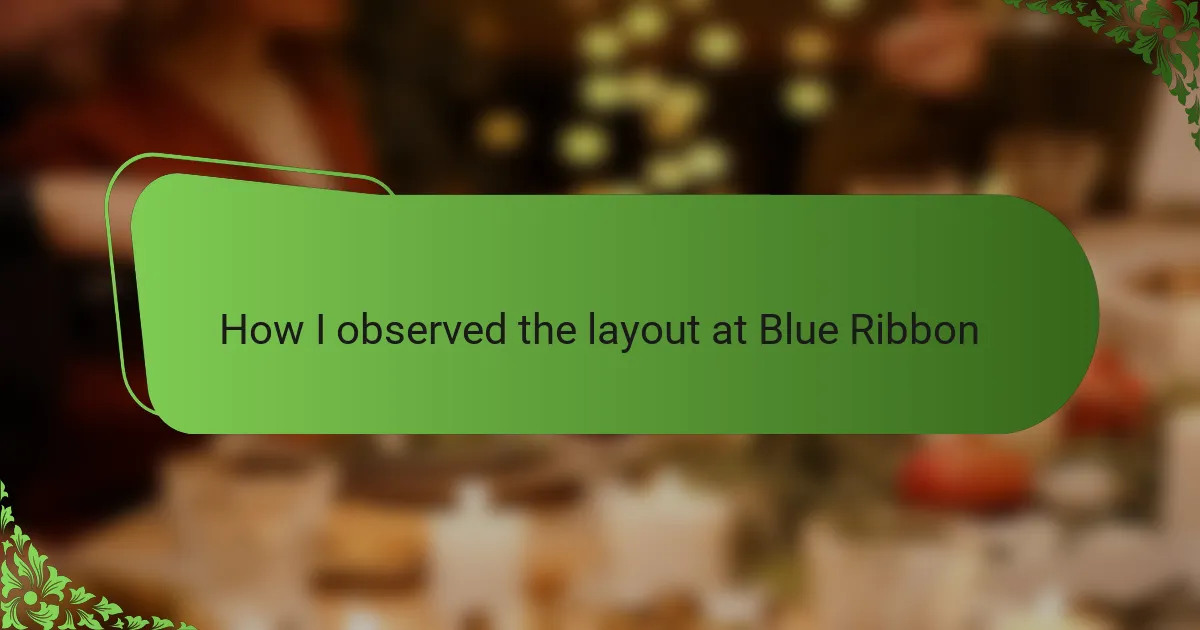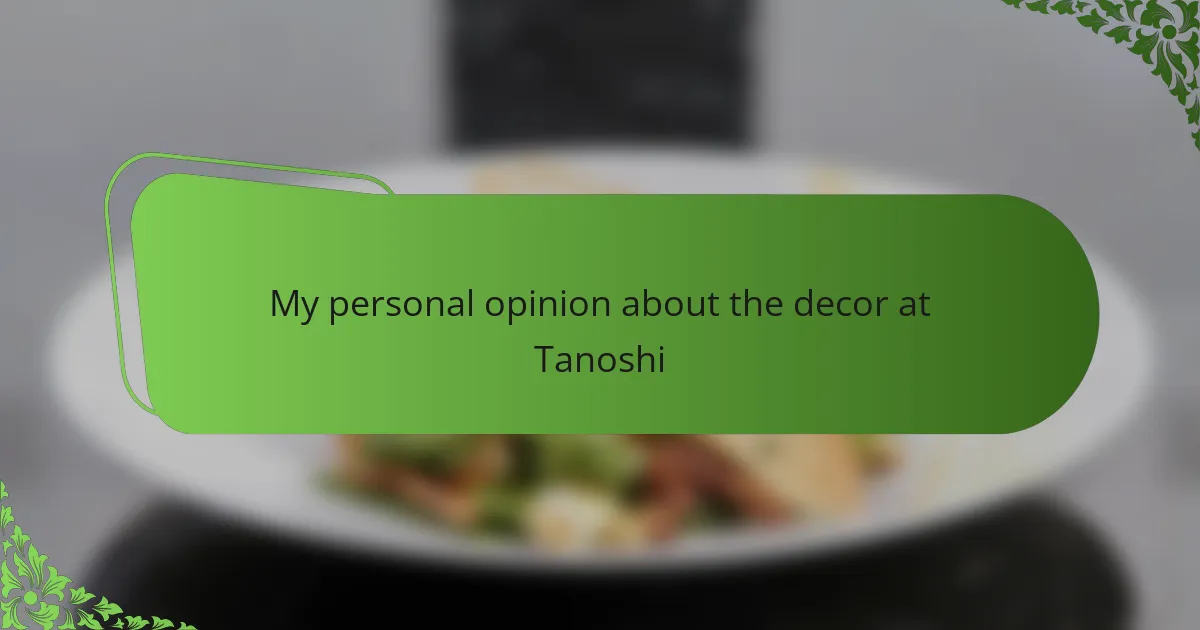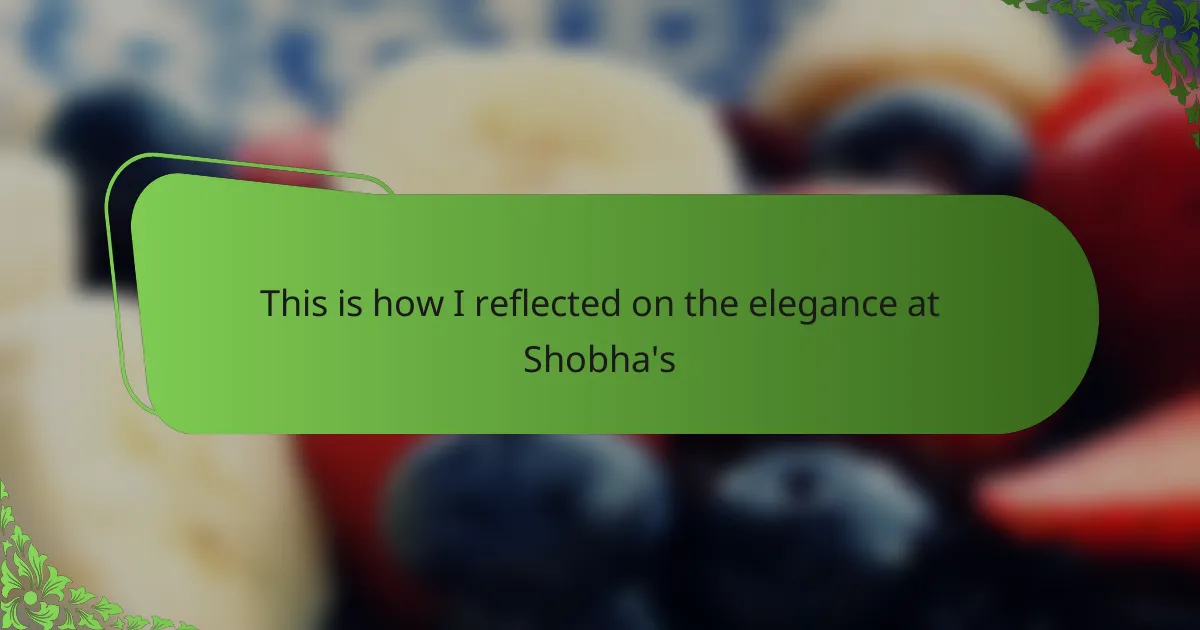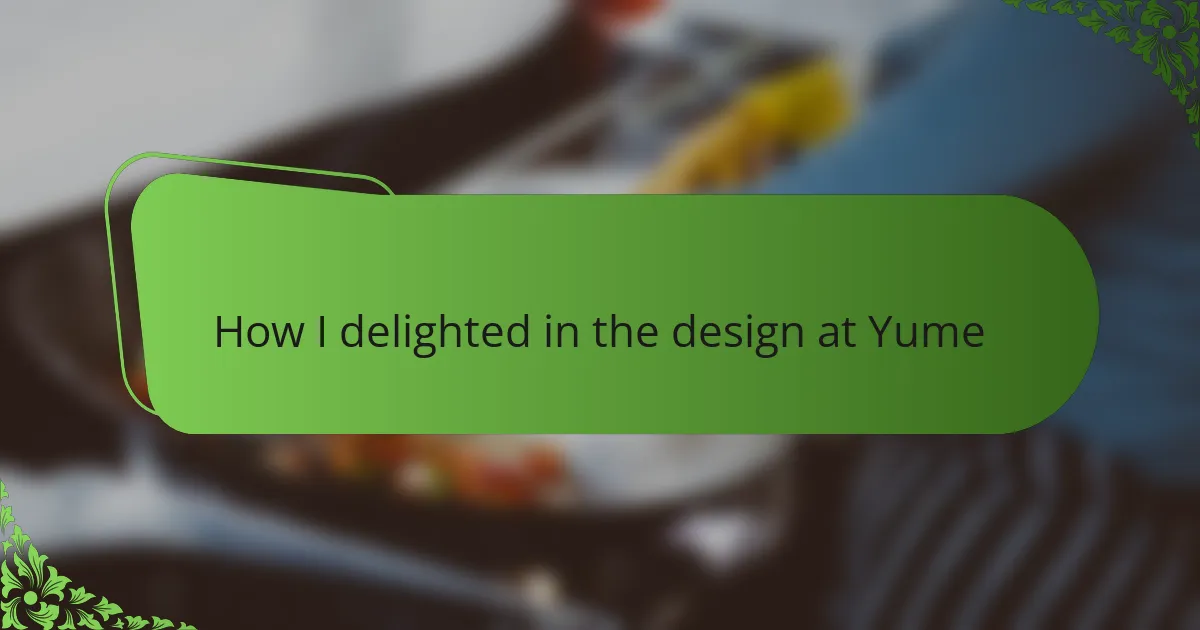Key takeaways
- Sushi restaurant layouts significantly influence the dining experience, affecting mood and engagement with the food.
- Blue Ribbon’s design features a central sushi bar that fosters intimacy and encourages interaction between chefs and diners.
- The seating arrangement balances cozy booths for quiet reflection with communal tables for lively conversation, catering to diverse dining preferences.
- The open flow from kitchen to dining area enhances the overall atmosphere, making the meal feel like a shared experience rather than simply dining out.
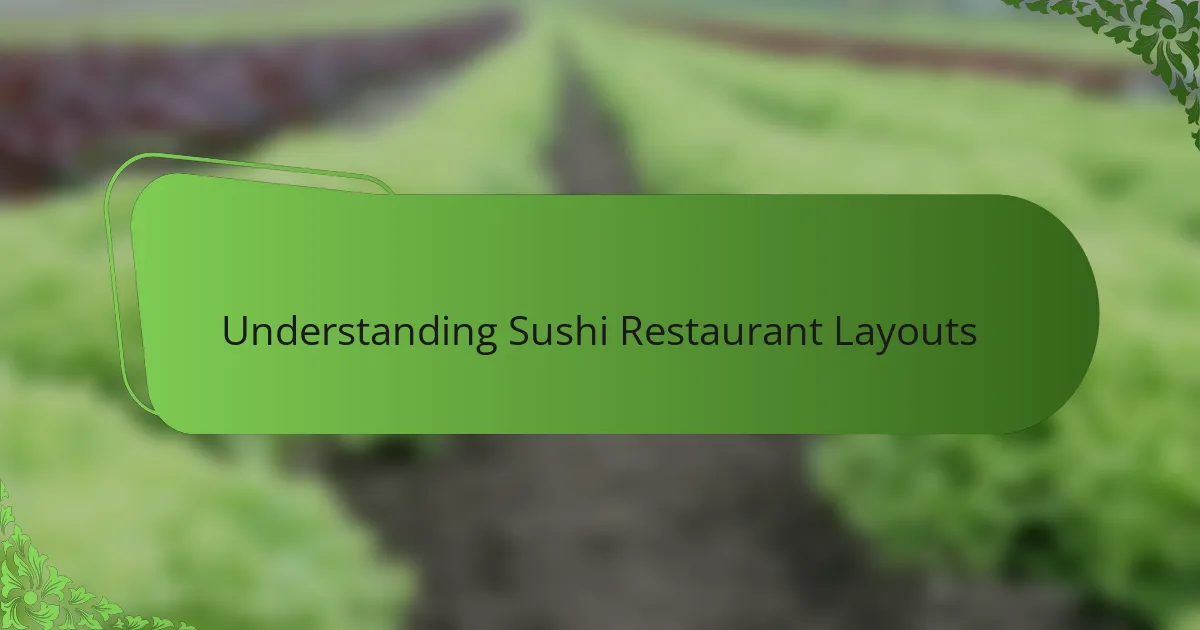
Understanding sushi restaurant layouts
Sushi restaurant layouts often reveal a lot about the dining experience before you even order a bite. Have you ever noticed how the arrangement of sushi bars, seating, and kitchen visibility can set the tone for intimacy or liveliness? From my experience, a well-thought-out layout makes you feel connected to the chef’s craft, almost as if you’re part of the process.
I remember walking into a sushi place where the bar wrapped around the chef like a stage, making every slice and roll feel theatrical and personal. That closeness invites curiosity and conversation, which transforms a simple meal into something memorable. Isn’t it fascinating how spatial design can influence your mood and how you savor food?
Sometimes, layouts include private booths or quiet corners that offer a completely different vibe—more reflective and cozy. These spaces appeal to those seeking a calm escape, where the focus is purely on the flavors. It’s almost like the restaurant understands varied needs just through its physical setup. Have you ever found yourself preferring one seating style over another without really knowing why?
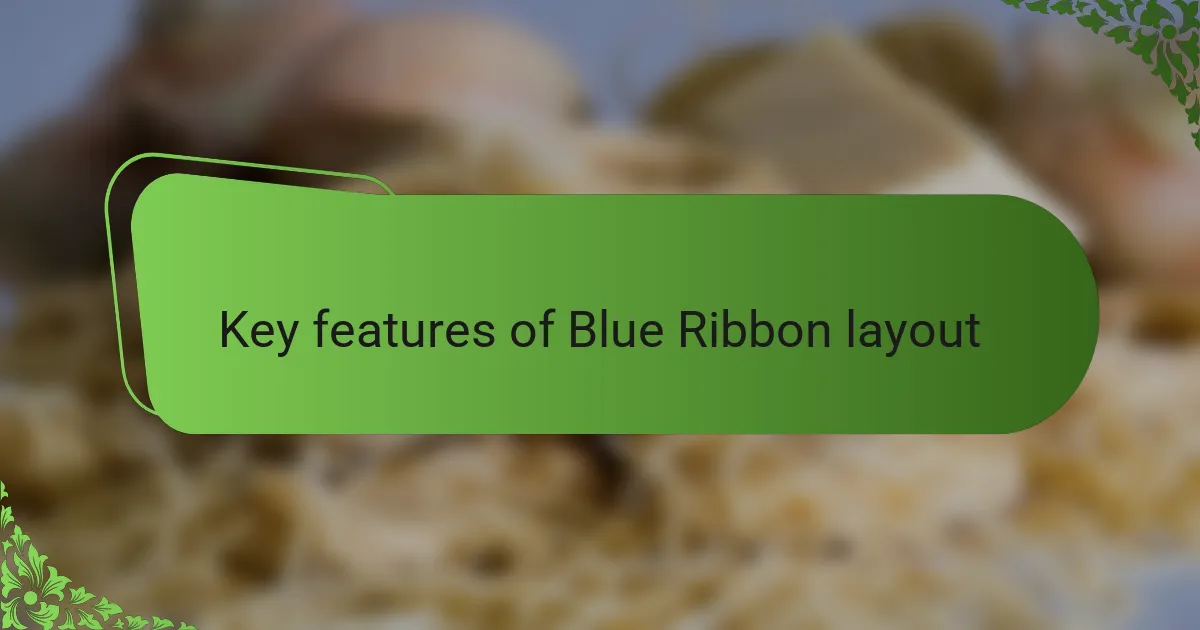
Key features of Blue Ribbon layout
One of the first things I noticed about Blue Ribbon’s layout is how the sushi bar takes center stage, curving around the chefs like a welcoming embrace. It felt like being invited into an intimate performance, where every cut and roll was visible, drawing me closer to the artistry. Have you ever felt more engaged in a meal simply because you could see the craftsmanship unfold right before your eyes?
The seating arrangement strikes a clever balance between social energy and personal space. There were cozy booths nestled along the walls, providing quiet retreats for those who want to savor their sushi in peace, while communal tables encouraged lively conversations among strangers. It made me appreciate how thoughtful design can cater to so many moods in one vibrant room.
What really stood out to me was the seamless flow from kitchen to dining area—no barriers, just open sightlines that kept the atmosphere lively but relaxed. Watching the chefs in action without any obstructions made me feel like I was part of the experience, not just a guest. Isn’t it amazing how a simple layout choice can turn a meal into a shared story?
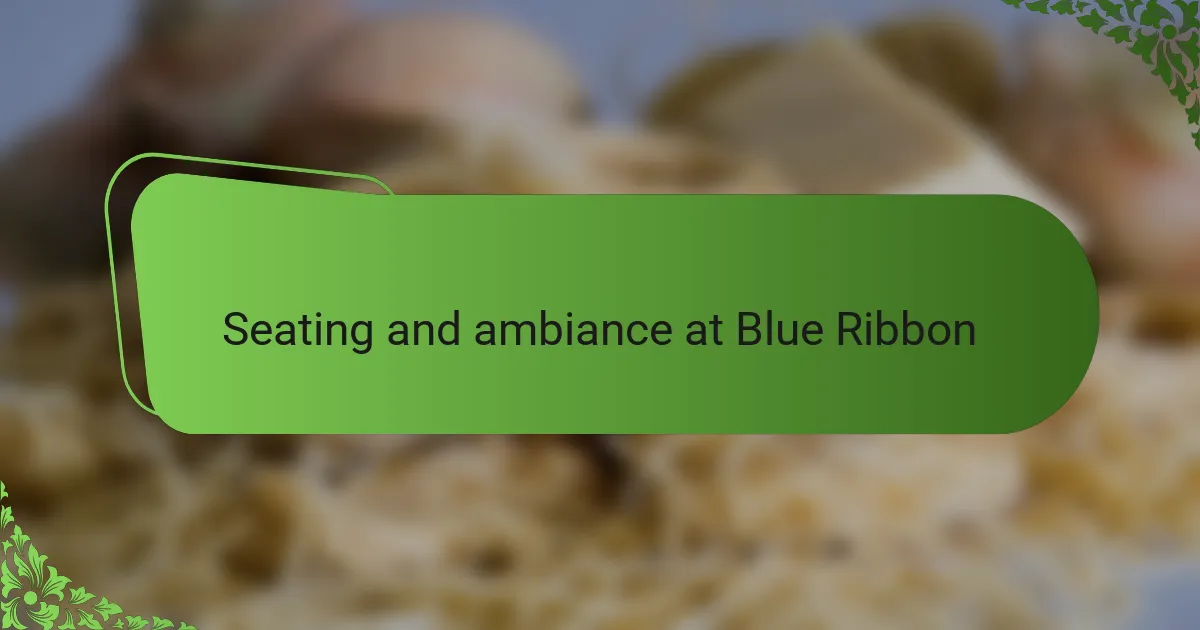
Seating and ambiance at Blue Ribbon
The seating at Blue Ribbon felt instantly welcoming, with the sushi bar curving gracefully like a gentle hug around the chefs. I found myself drawn to the bar, where the closeness made every slice seem more vibrant and alive—it was like being part of an unfolding story rather than just a spectator. Have you ever sat somewhere that made you feel this kind of connection before your meal even begins?
Moving away from the bar, the cozy booths along the walls offered a surprisingly peaceful escape from the energetic hum of the room. I slid into one and noticed how the soft lighting and plush cushions created a sense of calm, inviting quiet reflection and full attention on the flavors. Isn’t it wonderful when a restaurant’s layout understands your need for personal space without sacrificing the overall buzz?
What truly captivated me was how the entire space felt balanced—not too loud, not too sterile. The openness between kitchen and dining area kept the vibe casual yet vibrant, as chefs moved with lively precision in clear view. It’s rare to find a design that effortlessly encourages both connection and comfort, don’t you think?
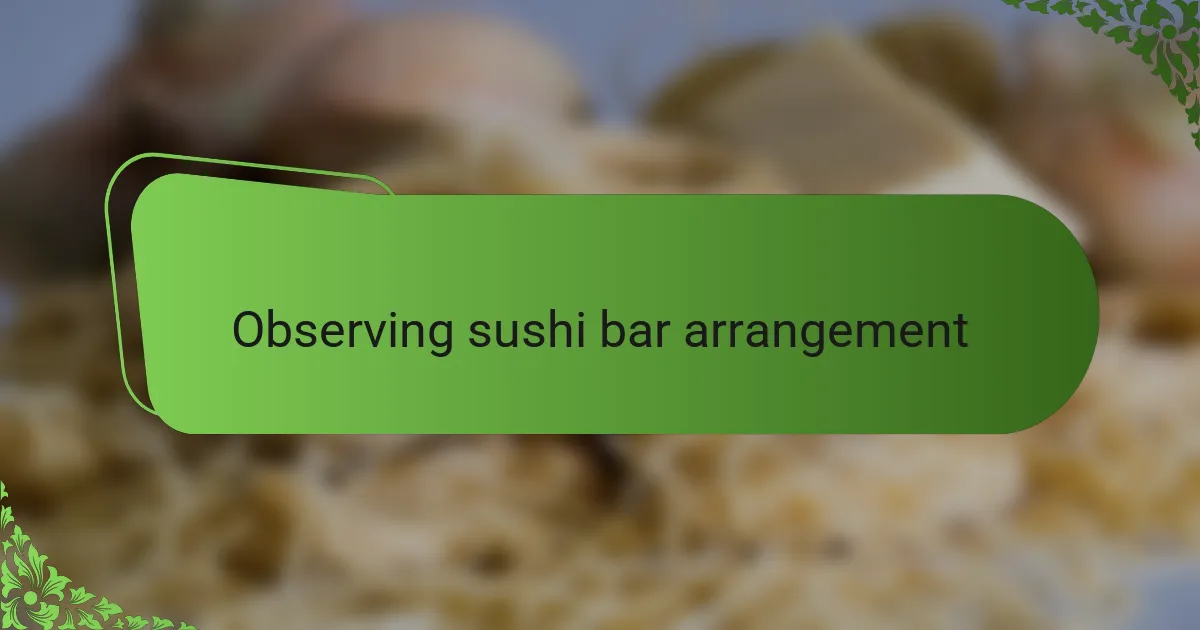
Observing sushi bar arrangement
Watching the sushi bar at Blue Ribbon felt like stepping into a finely tuned ballet. The chefs moved confidently within the curved counter, their every action framed perfectly by the sleek arrangement. I couldn’t help but lean in, drawn by the intimacy the layout created—it was as if the space whispered, “Come closer, see the craft.”
What surprised me was how the bar’s shape naturally guided conversation without overwhelming it. Sitting there, I noticed how each seat offered a unique vantage point, making every diner feel personally invited into the chef’s world. Have you ever experienced a place where the seating itself makes you feel noticed and valued?
The open design blurred the line between kitchen and dining area so seamlessly that I often forgot where one ended and the other began. This lack of barriers wasn’t just practical; it created a warm, communal energy. Watching the chefs work without interruption made the whole sushi-making process feel accessible and shared—something I find rare and deeply engaging.

Practical insights from Blue Ribbon visit
One thing that really struck me during my Blue Ribbon visit was how effortlessly the layout supports both intimacy and social buzz. I found myself shifting between cozy booths and the lively sushi bar, each spot offering a different flavor of connection. Have you ever noticed how thoughtful spatial design lets you choose the kind of dining experience you want, almost like flipping a mood switch?
I also realized that the clear sightlines from kitchen to table aren’t just about watching chefs work—they invite you into a shared experience. It felt less like eating out and more like witnessing a culinary story unfold in real time. That sense of inclusion made every bite feel more meaningful, as if I was part of a small, exclusive audience.
What really impressed me was how Blue Ribbon balances practical flow with emotional warmth. From the curved bar that hugs the chefs to the quiet corners perfect for reflection, the layout seems designed to answer unspoken needs. Isn’t it amazing how much a restaurant’s physical space can shape not just your comfort, but also how deeply you connect to the food?
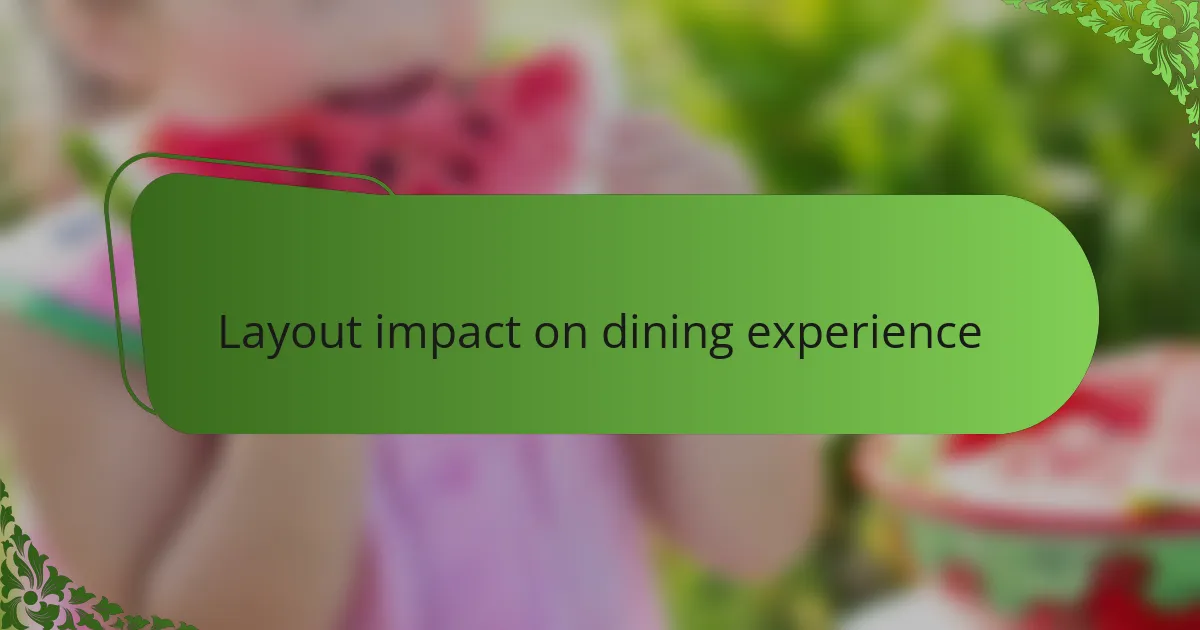
Layout impact on dining experience
There’s something about the layout at Blue Ribbon that instantly shapes how you feel in the space. I noticed that sitting so close to the sushi bar made me more attentive, almost like I was sharing a secret with the chef. Have you ever caught yourself suddenly more present just because the setting invites it?
The way the seating zones are divided also stood out to me—it’s like the restaurant respects your mood without saying a word. When I needed a moment to myself, slipping into a booth felt like a gentle pause amid the buzz. Isn’t it rare to find a place where the room listens as much as the people do?
What really struck me was how the open flow from kitchen to table keeps the energy alive without feeling chaotic. Watching the chefs’ focused movements while still feeling part of a relaxed crowd made the whole experience feel alive and personal. Have you ever realized how a layout can make artistry feel approachable rather than distant?
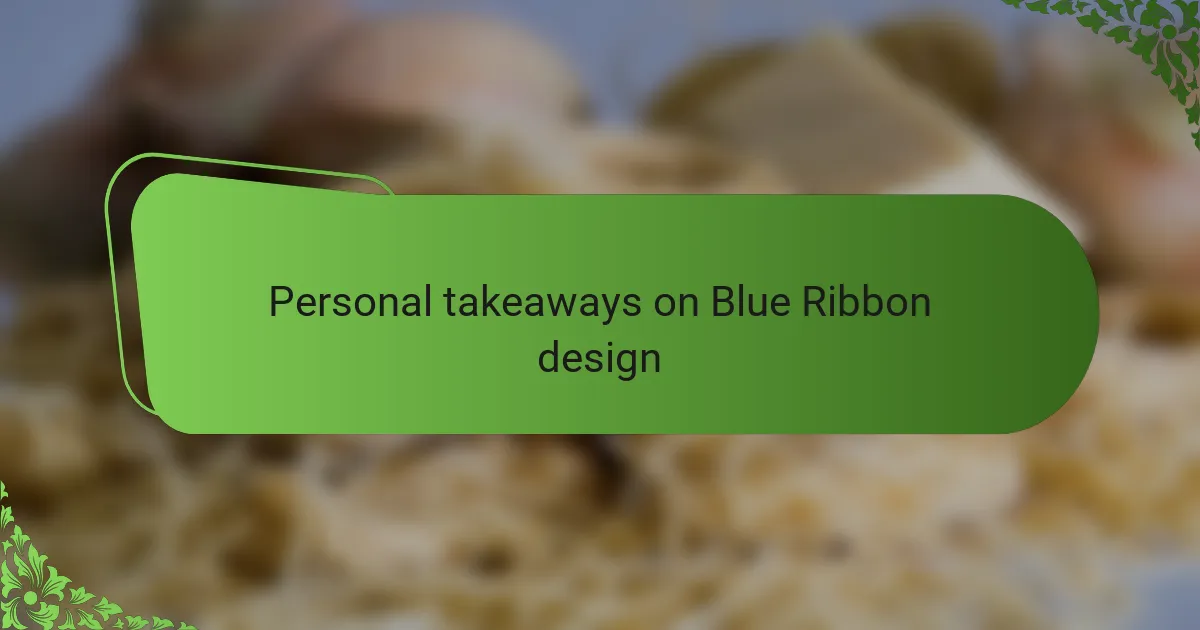
Personal takeaways on Blue Ribbon design
Blue Ribbon’s design left a lasting impression on me, especially in how it blends intimacy with vibrancy so naturally. Sitting at the curved sushi bar, I felt a surprising closeness not just to the chefs but to the entire dining experience, like being part of a quiet, shared ritual. Have you ever felt a space welcome you so warmly that it heightens every sense without overwhelming you?
What I appreciate most is how the layout respects different moods without words—whether you crave lively interaction or serene solitude, the design has you covered. I found myself effortlessly shifting between the energetic communal tables and the peaceful booths, each spot catering perfectly to my changing desire for connection or calm. Isn’t it remarkable how much thought goes into making a physical space feel emotionally intelligent?
Above all, Blue Ribbon’s open flow from kitchen to dining area made me realize how layout can turn a meal into a story. Watching the chefs’ precise movements against this backdrop of welcoming openness made me feel less like a customer and more like an invited guest. Don’t you think a layout that invites this kind of engagement adds a whole new layer to dining?
